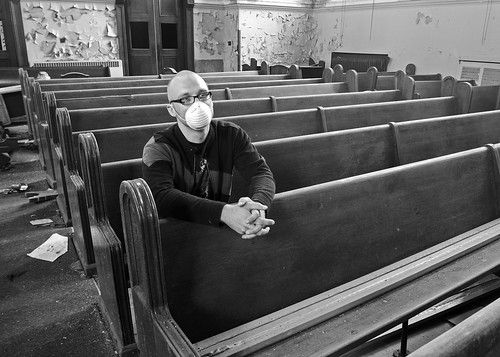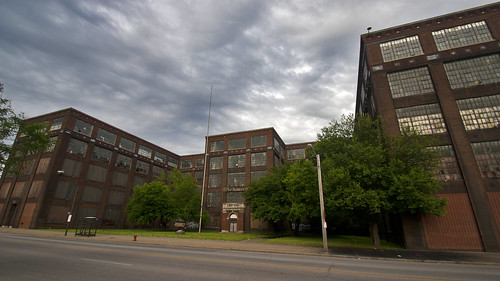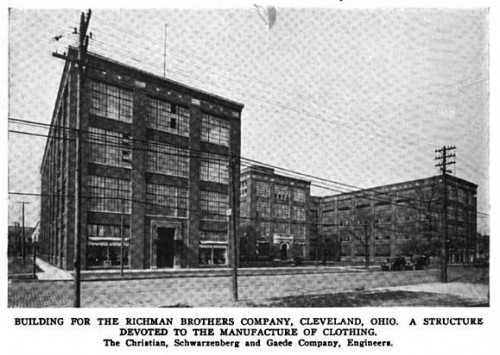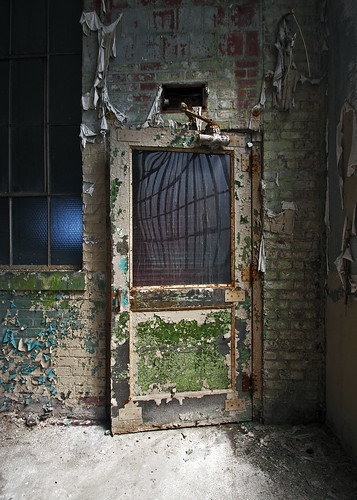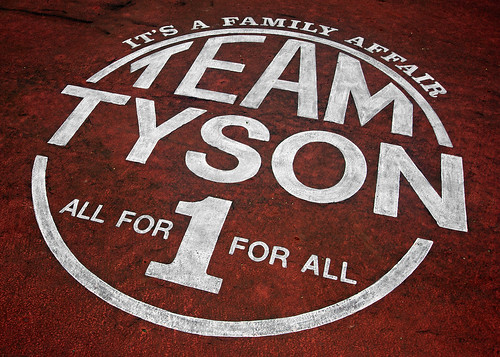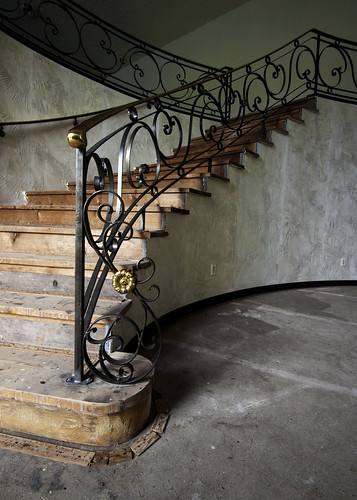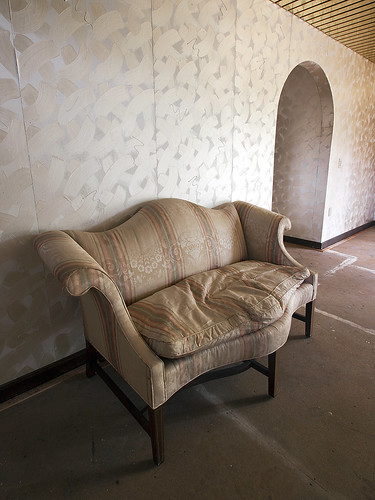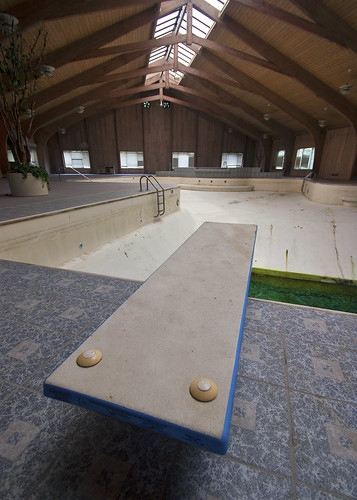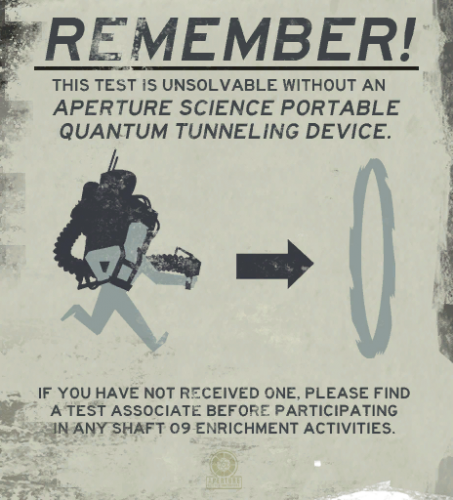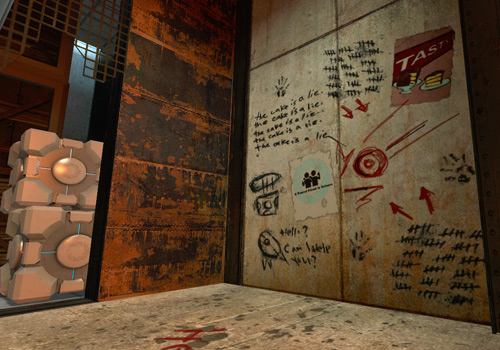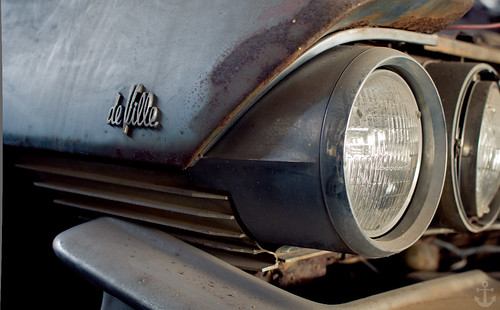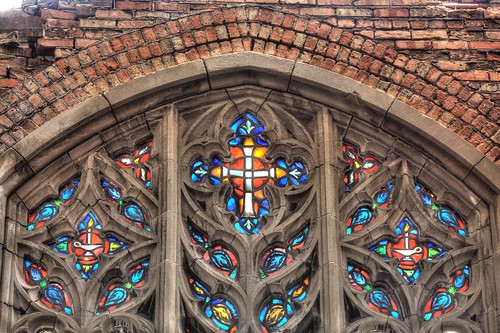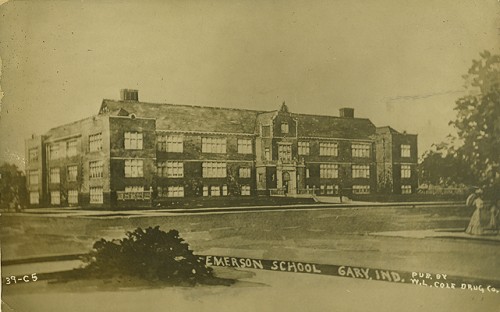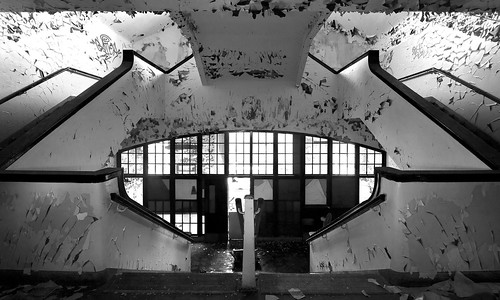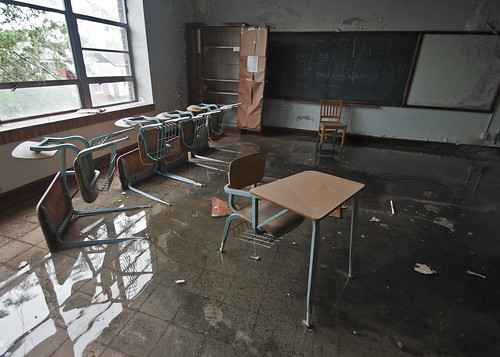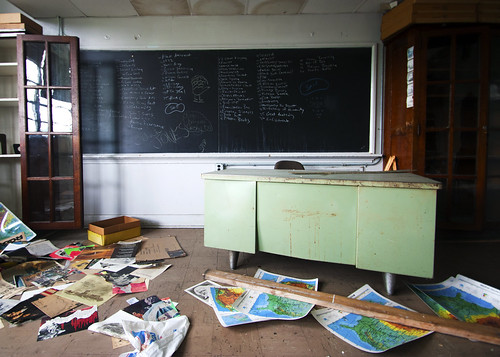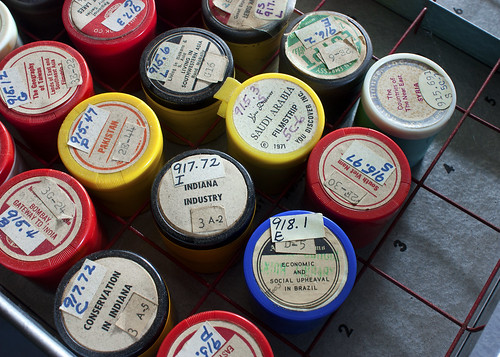Photo: The American Urbex author at an abandoned church in the south side of Chicago.
American Urbex Podcast E.10 – Emerson School
Exploring the history of Emerson School in Gary, Indiana begs an important question about what is taught in schools.
Subscribe to the American Urbex Podcast on iTunes.
Emerson School – American Urbex article on Emerson School
Emerson School – Flickr Set
American Urbex Group on Flickr
American Urbex on Facebook
American Urbex on Twitter
Audio Urbex
It’s been a while since I’ve done one of these. When I work on entries there are certain pieces of music that aid me when writing, editing photos, or generally researching urbex locations. They’re great motivators.
Koh Ohtani – Shadow of the Colossus – The Opened Way
Marilyn Manson – A Place in the Dirt
Nine Inch Nails – Right Where It Belongs (Live)
A Silver Mt. Zion – Stumble Then Rise on Some Awkward Morning
…and one more for those who grew up in the 1990’s. I remember being awestruck by the ragtag group of eco-terrorists that broke into the gritty Shin-Ra Mako power plant. It may have inspired me to become an urban explorer later on in life.
Nobuo Uematsu – Final Fantasy VII – Bombing Mission
Richman Brothers
Photo: The massive Richman factory was once the most advanced clothing factory in the US.
Over the past decade large American corporations have reported record breaking profits hand over fist annually. These astronomical profits, however, have not translated into more American jobs. In fact the trend is working in a counter-intuitive direction. Job security, retirement benefits, union representation, workers’ rights, vacation time, livable wage rates and other progressive workplace stalwarts are under heavy assault. One end of the current political narrative has demonized the working class as responsible for the economic downturn, while simultaneously supporting tax breaks for companies that create jobs… overseas. In its heyday, the Richman Brothers Company was not one of those businesses looking to maximize profits by putting the welfare of its workers at risk. The company’s greatest asset was not its bank account balance, but rather the people that showed up to earn an honest living.
Photo: The factory as it appeared after construction finished.
If you had a bit of pig iron or salt to trade in 1853 there was a young entrepreneur named Henry Richman that was willing to fit you with proper clothes. The payment-flexible Portsmouth, Ohio businessman moved his garment business to Cleveland in 1879. The founder’s three sons Nathan, Charles, and paternally named Henry breathed new life into the family business and ventured the company into new territory. Nathan began experimenting with selling suits directly to the customer via mail in 1903. Realizing the potential of direct-to-consumer sales, Richman was the first clothier to open their own branded retail outlet in 1907. The strategy proved to be winning formula and the company grew tremendously.
The burgeoning operation tapped the Christian, Scharzenberg and Gaede Company in 1915 to construct a state-of-the-art factory in the heart of Cleveland. The architecture of the factory borrows design innovations from Richman competitor Joseph & Feiss. The U-shape design provides ample floor space for operation and maximizes air-flow. Large windows on all sides cut energy costs by providing natural light throughout the day. The original Richman property occupied 17 acres, but expansions in 1924, 1927, and 1929 extended the property to 23 acres. Total factory floorspace amounted to a staggering 650,000 square feet.
Photo: Employee earnings report left behind on the factory floor.
At its zenith the factory employed around 2500 workers, each of whom benefitted from the progressive business practices the three Richman brothers instituted. The Richman brothers placed a great emphasis on personal accountability to their employees. Executives would regularly stand at the door and greet every employee by name. Having to look your employees straight in the eye meant that the company took great lengths to insure employee welfare.
According to a 1939 Time Magazine article workers enjoyed corporate stock options, three weeks paid vacation, and a 36-hour work week. Female workers received 10 weeks off with a $10 stipend per week to nurture their newborn infants. Sick employees also received the stipend if they were unable to work while receiving medical treatment. The company regularly granted no-interest loans to financially solvent employees. Those in need were often granted outright in-kind donations. Punch-clocks were non-existent in the labor-friendly work environment at the factory.
As the economic turmoil of the Great Depression sent the economy into a downward spiral the multi-millionaire brothers took drastic action to insure the survival of their company. After 1931 the three brothers voluntarily took a pay cut. Although they still retained the duties and responsibilities of their positions, their names never again appeared on the payroll.
Photo: One of the many heavy doors throughout the factory.
During World War II and well into the 1950’s prosperity reigned at the factory. Cousin George Richman led the company to become the largest domestic clothing retailer with 119 stores. Richman fanned out across the country with a number of competitor acquisitions that continued well into the 1960s.
In 1969 the Richman Brothers Company was sold to the F.W. Woolworth Company. Under new management the Richman label continued to produce mens and boys clothing. Wooworth, however, did not have the business acumen to weather tough economic times as the Richman brothers had during the Great Depression. As part of a broad strategy to shed underperforming brands Woolworth decided to close 260 Richman retail stores in 1992. Operations at what was once known as the “World’s Greatest Clothing Factory” ceased operations immediately thereafter.
Photo: The author of American Urbex enjoys a game of Royal Flush pinball.
For nearly two decades the dormant boarded-up factory loomed over the Cleveland residential neighborhood that surrounds it. During vacancy the property was briefly considered as a potential future prison site or office space, but plans never materialized. In September of 2009 the property was purchased by a Chinese investment group looking to establish an American presence. Owner Derek Ng is actively pitching the factory as a place for mixed use development.
There is not much left at the factory that once was a dominant player in the American clothing market. The factory is a labyrinth of concrete walls and nearly identical façades. It is a ghost of the glory days of American industrial might. It is an homage to the wonders of capitalism, which neatly packaged American jobs and sold it overseas to cut costs.
The Richman brothers valued their employees and modeled what a responsible company can do for the working class. The workplace benefits they pioneered were in place long before some of them became commonplace by federal law. Contemporary executives could learn a valuable lesson from the Richman brothers’ stewardship in both hard times and prosperity. Wealth does not necessarily corrupt a man, but few wealthy are as benevolent as a Richman.
Resources:
Ben Savoca – CAD drawings of the building.
CGLI – Rendering of a revitalized factory.
Cleveland – List of buildings from architects Christian, Schwarzenburg and Gaede.
Cleveland.com – Firefighters respond to a fire in the factory.
Cleveland.com – A Chinese investment group now owns the factory.
Daily Screw – A corkscrew bearing the Richman name.
eBay – Richman Brothers clothes for sale.
Encyclopedia of Cleveland – Entry for the Richman Brothers company.
Encyclopedia of Cleveland – Entry for the history of the garment industry in the city.
Go Antiques – Company stock certificate with a picture of the factory on it.
Google Books – Mentions Nathan G. Richman receiving an award for philanthropy.
Google Books – Photo of the building by the architect.
Google Books – Company President Lewman knew his 2000 employees by name.
Google Books – News of Nathan G. Richman’s death.
New York Times – 1990 article on the promotion of Lee Sutherland to Chief Executive.
New York Times – 1992 article on Woolworth closing 260 Richman stores.
Ohio History (PDF) – National Register of Historic Places Registration Form that mentions the factory.
Scene – 1999 article that mentions the location being scouted for a possible prison.
Time – 1939 article about the progressive work atmosphere at Richman.
Trademarkia – Trademarks registered to Richman.
WKYC – Local news has video of owner Derek Ng and shots inside the building.
American Urbex Podcast E.09 – Edgewater Medical Center
This week the American Urbex Podcast delves into one of the biggest cases of Medicare fraud in US history.
Subscribe to the American Urbex Podcast on iTunes.
Edgewater Medical Center article on American Urbex
Edgewater Medical Center on Flickr
American Urbex Group on Flickr
American Urbex on Facebook
American Urbex on Twitter
Mike Tyson Mansion
Photo: The Tyson emblem on the basketball court on the property.
Southington, Ohio is one of those places where everything a small American community needs is on one corner. The US Post Office, fire department, county clerk, church and convenience store are all within plain view of each other. When I pulled into Southington with an out of state license plate, one of the locals came by to greet me. Doug and I struck up a conversation and he told me all about Southington’s history as I ate lunch. In the 1970’s he and others from the area tried to set a Guinness World Record by playing basketball for 60 hours continuously. Graduates from the high school each receive $5 from a trust fund set up in the early 1900’s. Mike Tyson once owned a mansion not far up the road, too. I only pretended to be surprised about that last bit of information that Doug shared with me. In reality, the mansion is what I set out to see in the first place. After a solid 20 minutes of small talk I told him I was going to hike around Southington and snap some pictures.
Photo: Staircase by the main entrance.
About a mile just north of the main intersection of the rural community is a large estate surrounded by overgrowth. An iron gate over the driveway bears the name of one of the most famous pugilists in history. Mike Tyson was a world champion boxer that electrified the sport. Within just three years of his professional debut at the age of 18 in 1985, Tyson’s career trajectory rocketed him to the top of the boxing world by 1988.
In 1980 Trumbull county commissioner Ted Vannelli helped himself to county funds to develop his home on an 50+ acre parcel of land in Southington. Authorities eventually caught wind of Vannelli’s impropriety and foreclosed on the mansion. Although the young boxer was flush with cash Tyson was able to purchase the Southington mansion for the rather thrifty sum of $300,000 at a sheriff auction. At the height of his boxing career, Tyson occupied the spacious home when training for fights at Don King’s facility in nearby Orwell.
Photo (source): The main living room of the gaudy mansion.
The luxurious mansion features five bedrooms, several spacious living quarters, seven and a half bathrooms, a full kitchen, a mini-kitchen/washroom, two attached garages, one external garage, full size pool and jacuzzi, tiger cages and basketball court. Tyson’s design choices included gold trim, zebra print carpet, and everything else you could imagine that was tacky for interior designs in 1989. Tyson would not enjoy his dwelling for too long before running afoul of the law.
Large sums of money, raw physical power, and a cast of shady characters surrounding the boxer may have been a corrupting influence. Tyson was taken into custody in 1991 on allegations of raping Desiree Washington in an Indianapolis hotel room. In 1992 a jury deliberated for ten hours before finding him guilty. The ruling committed Tyson to a six year prison sentence with four years of parole. In 1995 Tyson was granted parole and released from prison.
Tyson returned to the tranquil rural Southington community to find respite, but the media fanfare followed him. With his future boxing career in question and financial situation in dire straits Tyson puts the mansion on the real estate market. Four years later in 1999 a marketer named Paul Monea purchases the property for the sum of $1.3 million.
Photo: Living area next to the front door.
Monea isn’t a household name, but those who remember the Tae Bo fitness craze are familiar with his product. Undercover FBI agents set their sights on Monea when he tried sell the mansion along with the rare 43-carat yellow “Golden Eye” diamond in 2006. How Monea came into possession of the exquisitely rare diamond is not quite certain. What is certain, according to a Justice Department grand jury indictment filing, is that Monea and an accomplice conspired to conduct the transaction with drug dealers. Those drug dealers were in fact part of a cover story the FBI carefully crafted. For his crimes Monea was ordered to surrender the diamond, the mansion and $100,000. The Monea Family Trust tried to recover the diamond through legal means, but were subsequently denied in 2010. With all the other spurious ownership claims settled the government will auction off the exquisite Golden Eye diamond in September 2011.
Businessman Ron Hemelgarn placed the only bid when the mansion went up again in a sheriff auction on October 22, 2010. For $600,000 and $360,604.66 in back taxes Hemelgarn is now the legitimate owner of the former Tyson mansion. Because Hemelgarn originally held a $600,000 lien against the property at the time of sale, the money from the purchase price returns to him. The final figure means that Hemelgarn spent not much more than what Tyson did for the same property two decades earlier.
Photo: One of the few remaining furniture pieces. This one is quite elegant.
Not long after Hemelgarn took ownership he hired someone to do work on the property. Local authorities used to being summoned to the location for reports of trespassing must have been surprised to discover someone there legally. Within that timeframe Hemelgarn had much of the ugly furniture, horrendous carpet, and other home fixtures removed. Exposed carpet nails, a few ancient appliances, and heavier objects are all that remain behind. The bathrooms reek of foulness trapped by the lack of running water. A few miscreant explorers have found it necessary to mark their presence with spray paint. A throng of algae thrives at the lowest point of the mostly empty pool.
News of the nary occupied mansion first broke on the internet a few years ago after Monea was captured by the feds. Information from the site Illicit Ohio and photos Mike Adam’s Flickr set spread rapidly through internet content sources. Comparing my photos to that of explorers past, it is clear Hemelgarn is intent on doing something positive with the property. He may have a difficult time, however, breaking the stigma attached to the history of the property. Just like the Willis Tower in Chicago will always be the Sears Tower in the minds of a certain segment of the population, so too will this mansion be indelibly marked as the Tyson mansion despite whoever owns it.
Photo: Diving board next to the massive indoor pool. Notice the green water.
There are few urbex locations that I visit that are actually rehabilitated after an extended dormant period. It is sad to see the Tyson mansion fall off the list of possible shooting locations for urban explorers. It is important though, that we appreciate a location for what it is in the time and space that it does exist.
When I set out to fundraise for this trip I set the Tyson mansion as a general goal in my head. I’m glad to report that the gamble to drive to a remote location with a minimal amount of location information was a success. Thanks again to all of you who made this possible. Thanks also, to the brave explorers in whose footsteps I travel.
Resources:
CantonRep – Article about the Golden Eye diamond.
Cleveland.com – The Golden Eye diamond will go up for auction in September.
Clevescene – Article about Monea’s shady business dealings.
Danny Wills – Gallery #1 and #2 of the decor within the mansion in August 2008.
FindLaw – US v. Monea Family Trust ruling in the 6th Circuit Court.
Flickr – Mike Adams excellent set of the mansion.
Flickr – My Mike Tyson Mansion set of photos.
Galivantin’ in Ohio – Timeline of the mansion history.
Illicit Ohio – Details of one urbex photographer’s journey and research on the mansion.
People Magazine – 1995 article mentions the Southington mansion.
Property Pursuit – Lists the real estate details for potential buyers.
Time – 1999 article that mentions Paul Monea in unflattering terms.
Trib Today – Police catch three trespassers on the property.
Trib Today – Ownership transferred to Ron Hamelgarn in 2010.
US District Court (PDF) – Indictment of Paul Monea that mentions the manson.
Wikipedia – Entry for boxer Mike Tyson.
WKBN – Police respond to reports of trespassing.
Aperture Science
NOTE: Location is approximated.
Post World War II era America experienced a golden age in science. Driven by necessity scientists unleashed the raw power of the atom. The Soviet launch of Sputnik sparked a race to send man to the moon. To maintain intellectual superiority during the Cold War the US government contracted with many private science companies to make wild dreams a reality. It was companies that dared to dream big, like Aperture Science, that brought those scientific innovations into American lives. Exploring the abandoned Aperture labs was an urbex adventure unlike any other. Before delving into that, an examination of Aperture’s history is in order.
In 1943 a tenacious entrepreneur by the name of Cave Johnson started a small business called Aperture Fixtures, which developed shower curtains. Johnson’s innovations in shower curtain technology propelled the young startup into financial security seemingly overnight. The next year Cave Johnson purchased a salt mine in the Michigan Upper Peninsula to be the headquarters for Aperture Fixtures.
The enigmatic Johnson applied his scientific principles to shower curtain production with great success. In 1947 the company renamed itself Aperture Science Innovators and were awarded the Best New Science Company Award that same year. Within two years time the company placed #2 on the list of Top 100 Applied Science Companies by the Mechanical Engineering World Journal. After a decade of operating as a private company, Johnson takes Aperture Science Innovators public in 1953. The Eisenhower Administration took notice of the innovative company and contracted with them to produce shower curtains for all branches of the US Military, with the exception of the Navy. The government contract provided Aperture with enough capital to support numerous ventures outside of shower curtain research and development.
The salt mine upon which the Aperture headquarters was constructed extended some four kilometers into the ground at the time when Johnson acquired it. Behind the scenes Aperture was dabbling in more than just shower curtains in the depths of the earth. The first of multiple underground facilities were built around this time, one of which was dubbed Test Shaft 09. It was here that Aperture began flexing their scientific prowess. One such development was a dietetic pudding substitute comprised of non-toxic fiberglass insulation, otherwise known as repulsion gel. Another prolific development was the Aperture Science Portal Quantum Tunneling Device, a.k.a. the Portal Gun. When shot the Portal Gun renders two linked portals, one orange and one blue, through which matter can pass through instantaneously.
Photo (source): An old poster showing an early version of the Portal Gun.
In the depths of Test Shaft 09 the company built test chambers to put their innovations through the ropes. Astronauts, war heroes, and olympians were recruited by Johnson to navigate each test chamber. Every unique test chamber required a combination of intellectual and physical skill to navigate with the assistance of the Portal Gun. Many tests subjects succumbed to massive injury and/or death despite their enhanced natural capabilities.
The 1960’s were not as prosperous as the previous decade for Aperture. A number of products stuck in the development stages and product recalls issued for health and safety violations stifled company profits. While the company was under intense scrutiny for the recalls, Johnson ordered that Test Shaft 09 be sealed off in 1961 to conceal early unethical scientific projects. The US Senate called in Johnson for a hearing in 1968 to address missing astronauts that had participated in Aperture experiments in the 1950’s. Later that year Aperture filed for bankruptcy. An embattled Johnson attributes the company’s misfortune to corporate espionage by competing rival Black Mesa.
With its reputation tarnished, coffers emptied, and company survival in the balance Johnson resumed operations in Test Shaft 09. Unable to financially persuade society’s intellectual elite the company recruited homeless people with the promise of $60 cash for participating in testing. It is reported that Johnson showed little restraint when it came to his disdain for the quality of homeless test subjects.
Paranoia permeated throughout Aperture as Johnson became more unstable during the 1970’s. Staff were instructed to immediately report sightings of inspectors from a myriad of government entities. The quality of test subjects also broadened to include those on the fringes of society; orphans, elderly, and psychiatric patients.
Eventually the strong focus on scientific development displaced Aperture’s original goal and production of shower curtains ceased. During this period several test chambers were constructed to test the development of the new propulsion gel, the counterpart to repulsion gel. An accident in 1974 where Johnson was exposed to mercury greatly impacted his health, and appears to have amplified his mania. One particular memo from the corporate BBS gives clear insight into Johnson’s delirious shift.
Science is built on three pillars. Pillar one: Science without results is just witchcraft. Pillar two: Get results or you’re fired. Pillar three: if you suspect a coworker of bein’ a witch, report them immediately. I cannot stress that enough. Witchcraft will not be tolerated.
On the surface Johnson’s ramblings appeared to be insane, but it certainly motivated Aperture employees. Johnson’s health continued to spiral with Aperture’s fortune as the company limped along into the 1980’s. Working conditions degenerated to the point where Aperture employees were required to participate in testing. Despite facing an impending financial meltdown, the company somehow acquired $70 million worth of lunar materials to further develop the gels it had discovered. Prolonged exposure to lunar dust badly damaged Johnson’s lungs and caused his kidneys to fail. Senility gripped the Aperture founder as he approached death. During this time he developed a program to revitalize the company.
The three-tiered R&D program consisted of the following initiatives.
- The Heimlich Counter-Maneuver – A method for choking people to insure death in the event of the Heimlich being performed on them.
- The Take-A-Wish Foundation – An agency that finds dying children, takes a wish away from them, and redistributes the wish to a healthy adult for which he will start doing resistance band workouts to improve his vascular health.
- Further Development of the Portal Gun – A means to further shower curtain development.
The first two tiers of the program proved to be a public relations nightmare. As a result, Johnson was summoned before a Senate committee to respond to the rash of choking and sick children deaths. Thanks to now unsealed records we now know that at the meeting Aperture was secretly awarded a contract to continue developing the Heimlich Counter-Maneuver, which gave a much needed lifeline to the flailing company. Johnson’s health conditions, however, led to his death in 1982.
After Johnson’s passing company focus turned towards the development of the Portal Gun. Development hastened the expansion of the Aperture Science Enrichment Center well into the 1990’s. Concurrently an internal software program called GlaDOS accelerated the Portal Gun development pace. In its initial stages GlaDOS ran the companies computerized BBS, but by the mid-1990’s it had progressed to the point of achieving sentience. Experiments with artificial intelligence are known to have continued at the Enrichment Center into the early 2000’s.
Photo (source): Debris in the Aperture Science parking lot.
Aperture Science was built to be self-sufficient, underground, and deeply secluded from civilization. No one is certain when the already sparse activity at the only known Aperture Science checkpoint station ceased entirely. Visible debris on the surface of the checkpoint indicates that a massive explosion once rocked the facility. Debris and concrete had the unmistakable charcoal black veneer of fire damage.
It was with great trepidation that I entered the chasm that exposed an entry to the Enrichment Center as the sun was rising above the tree line. Adrenaline coursed through my veins as I met a familiar rusted industrial facade similar to other urbex locations I have explored. An endless array of pipes, fans, pistons, stairwells and precarious gangways alluded to a powerful internal machine. Progress through the maze-like support structure was slow going and arduous. Other than the dim light cast off by the occasional dangling fixture the path was cloaked in darkness. The path was comprised of mostly piercing black, rusty red, and glowing orange over the industrial facade. Each turn was carefully marked to insure egress when the exploration concluded.
One of the gangways eventually led to a door, which behind it was an observation room with a giant glazed window. The observation room included a few monitors connected to computers that appeared to be in stand-by mode. Clipboards on the desks held fast to notes with indecipherable scribbles referring to test subjects. It was then that my senses were shocked by the stark contrast of the environment that was barely visible through the glazed window. Normally I would not consider causing damage to an urbex location. On account of the severe isolation, energy already expended, and photographic potential I decided to break the window.
Through the window was a near pristine testing environment in which the observer’s must have viewed subjects. The walls, ceiling, and had a certain geometric and scientifically sterile aesthetic about them. On the wall near the main entryway to the room was a giant white sign with a number and a number of smaller danger warnings. Some of the warnings seemed comical in nature, which only heightens my curiosity as to what exactly Aperture was testing.
After exploring the vacant space of the testing chamber I proceeded to crawl through a break in one of the panels. It seemed odd that the panel had an Aperture branded mechanical arm to adjust the panel behind it. Again I was met with the gritty industrial facade as I slowly made my way around the exterior of more testing chambers. Some testing chambers I could only peer into as no viable means of exit was visible. In the darkness of some areas I could see bright red lines of light. Afraid of intentionally setting off a still active alarm system I steered clear of the red lights. While venturing deeper into the facility I came across the familiar markings of another urban explorer who apparently spent a great deal of time in the facility.
Photo (source): A previous urban explorer/graffiti artist left their mark.
Without natural external cues I lost track of time. I had made my way through most of the food and water supplies I carried with me. My legs felt as through they would soon rebel against me. Fatigue, disorientation, and darkness increase the chances that even the most seasoned urban explorer will have an accident. It was already late when I decided to turn around and head back to the surface. A clear night sky with a full moon was a welcome sight as I left the Aperture grounds.
The story of Aperture, its dramatic rise and inglorious downfall, is one of the most engaging histories of an urbex location that I have every researched. I have tried in vain for some time to contact any Aperture employee who worked at the Enrichment Center. If you have information regarding activities that occurred at the Aperture Science Enrichment Center please contact American Urbex. If you survived the explosion and are still alive, I certainly would like to hear your story as soon as possible.
I must also stress to readers of this article that I will not divulge additional information regarding this urbex location. All requests will go unanswered.
Resources:
Aperture Science – Official homepage for the rogue laboratory.
Combine OverWiki – A comprehensive history of Aperture Science.
Combine OverWiki – Bio information on company founder Cave Johnson.
Game Informer – A brief history of Aperture Science.
Think With Portals – Official homepage for Portal 2.
YouTube – Aperture recruitment video for the Portal Project.
American Urbex E.08 – The Purple Hotel
An odd Chicagoland building played host to famous faces in its prime, but is now on the verge of demolition. In this episode host Ken Fager takes a look at the history of the Purple Hotel in Lincolnwood, Illinois.
Subscribe to the American Urbex Podcast on iTunes.
The Purple Hotel article on American Urbex
The Purple Hotel set on Flickr
BPDPhotography on Flickr
MikeAdamsPhotos on Flickr
Search for “Purple Hotel” on Flickr
American Urbex Group on Flickr
American Urbex on Facebook
American Urbex on Twitter
From the Flickr Pool
American Urbex has a Flickr group to share photos from your urban explorations. We’re also on Twitter, the Facebook, and iTunes. Once we figure out how Google+ works, maybe we’ll be there too. In any case here are some of the more interesting recent uploads to the Flickr group. Great work urbex photographers!
Hell’s Gate by Aperture Annie.
Last One. I Swear. by Swizzler.
Haynes Automobile Factory by JJACOBSphotography.
Abandoned City Methodist Church by slworking2.
Poor Bugs by MikeAdamsPhotos.
Emerson School
Photo (source): Emerson School as it appeared when it opened in 1909.
Americans constantly grapple with the best methods to educate children to become good citizens that contribute positively to society. Determining which facts, figures, names, dates, tests, benchmarks and statistics are significant is a battle waged on both ends of the ideological spectrum. Somewhere in the milieu we come to an agreement that there is never enough time to instruct everything in depth. Given the volume of content teachers must fit into curriculum for students to learn, many issues are drastically oversimplified. One of those unfortunate distortions is that after the Civil War the northern states continued to accept black Americans. The racially-charged history of the Emerson School on Gary, Indiana’s east side is one of those that should make you ask, “What did I really learn in school?”
Photo: The main doorway of the now abandoned Emerson High School.
Gary’s first school superintendent, Dr. William A. Wirt, helped design the first high school in the area. Wirt brought progressive reforms to the Gary schools that modern educators would accept as the norm. Wirt’s education philosophy revolved around the idea that the “whole child” must be educated. A complete education in Wirt’s philosophy includes not only developing the intellectual, but also the social, physical, vocational and character qualities of the individual student.
The school bears the name of American transcendentalist author Ralph Waldo Emerson. The Emerson school was built to include new facilities to aid student development which included an auditorium, gymnasium, pool, and even a zoo. The new school proved to be so successful that Wirt had to implement a policy to handle the 20-30 curious daily visitors. Wirt would later reuse many design elements from Emerson in the world famous Horace Mann High School on the west side of town.
Photo (source): Emerson as it appeared in 1913.
Wirt faced a dilemma in the 1910-20’s as the city’s black population greatly increased. The East Pulaski and Virginia Street School served the black population, but were segregated and in deplorable condition. The spillover caused nominal numbers of black students to receive education in predominately white schools throughout the city, but they were limited in which facilities they could use. In the 1926-27 school year six black students attended classes at Emerson High School. To help ameliorate the student overpopulation at Virginia Street School 18 black students were transferred to Emerson in 1927.
White students outraged at the presence of more black students in their midst immediately took to the streets. On Monday, September 26 some 600 students walked out of class. Those who remained inside were heckled incessantly until they joined the throngs of protesters. As the demonstration gained momentum signs saying, “WE WON’T GO BACK UNTIL EMERSON IS WHITE. . . . NO NIGGERS FOR EMERSON. . . . EMERSON IS A WHITE MAN’S SCHOOL” taunted the black students. On Tuesday the crowd swelled to about 800 students. Wirt hedged his bets by telling the angry crowd that “possibly when a new black school was erected on the east side, Emerson would be again segregated.” At its apex on Wednesday the student protesters numbered some 1357, which were also supported by family and other local citizens who took to the street. City, school, and district officials met with protesters to begin negotiations for bringing the strike to an end. By Friday an agreement was reached: Three of the original six black students at Emerson would be transfered, while the remaining three seniors would be allowed to graduate. The 18 black students transfered into Emerson would again be transferred out to other schools. The sum of $15,000 was also allocated for temporary facilities until a new black high school could be constructed.
Mounting pressure from civic groups such as the League of Women Voters, YWCA, and Gary Teacher’s Union to desegregate schools pushed district officials to make another attempt at integration in 1945. Again, white students took to the streets en masse in an effort to curb integration. Famous crooner Frank Sinatra even scolded the protesting students for their intolerance during a concert held at the Gary Memorial Auditorium. The following year the school district adopted a new policy that dictated, “children may not be discriminated in the school district in which they live, or within the schools in which they attend, because of race, color or religion.” The policy did not take effect until the following 1947 school year to allow the community time to adjust.
Photo: A classroom exposed to the elements swims in water.
After World War II the United States exported democracy and capitalism around the globe. As American business moved operations overseas major industrial centers began to decline. Because Emerson is a public school its fate is interwoven with that of Gary and its industry. As the population and median income plummeted, so to did revenue for Gary schools. Regular school operations continued until 1981 when low enrollment forced the school to reorganize. In 1982 the school changed its title to the Emerson School for the Visual and Performing Arts (VPA). The magnet school focused on attracting talent and fostering liberal arts skills.
Gary school district administrators faced a $23 million budget shortfall for the 2009 budget. At the time the district served about 14,000 students, which was half the enrollment 20 years prior. Consistently low test scores, high dropout rates, deplorable teaching facilities combined with an ever spiraling negative community tax base meant that hard decisions had to be made. The district decided to consolidate some of the area schools over a three year period. The writing, or mold more precisely, was on the wall for the historic building as concerned parents increasingly voiced their concern about Emerson health hazards. In 2008 the final bell rang for the Emerson building, which was just one year short of a full century of education service for the Gary community. During the transition Emerson VPA relocated to Miller Beach, Indiana. In 2011 the school returned to Gary, Indiana and currently occupies the former William A. Wirt High School building.
Photo: A ransacked classroom still has notes on the chalkboard from the last lesson.
The challenges of exploring the abandoned Emerson School were similar to Horace Mann High School, but were greatly intensified by inclement weather. The sky deluged the building to the point where some stairwells were inaccessible due to intense water flow. The ground floor of Emerson is set below the earth, so all water flowing within the building pooled in the ground level. The heavy cloud cover also shrouded the building in a cloak of darkness, which made setting up shots even more time consuming. The massive thunderstorm briefly subsided, only to be followed by stifling humidity. Then the storms returned in full force and set off tornado alarms. For a few moments before leaving the sun decided to peek through the clouds.
The building itself, which is on the National Register of Historic Places, is massive in scale. Wirt’s philosophies put into practice are immediately apparent when navigating the structure. The entire building revolves around the central auditorium and branches outwards. Science, math, language, music and other classrooms are easily identifiable by the decaying instructional material left behind. Even though the school had closed as recently as 2008, it felt as though Emerson was a generation behind. The only real modern artifacts found were unused textbooks still securely bound in dry storage areas. Each classroom seemed to harken back to an education generation that was no longer relevant to the modern classroom. Newspapers from decades past, Apple II computer equipment, floppy disks, vinyl records, lithographed secular songbooks and grade punchcards were stashed away all throughout. Some classrooms were filled with graffiti, while others still bear the final lesson on the chalkboard.
While considering the history and artifacts discovered on the whole Emerson can be compared to a tragic lifespan. A youthful Emerson was once daring, innovative, and eager to try new things. Mid-life struggles weighed heavily on Emerson’s soul and snuffed out the fire. In its waning years Emerson existed as a shell of its former self until finally passing. The century-old new revival style building lies dormant among a neighborhood of low-income housing and overgrown weeds.
Photo: The YouTube generation will never appreciate the educational filmstrip.
In the introduction to this article I asked, “What did I really learn in school?” Although I cannot formulate an answer for the reader, I feel that sharing what I have learned from exploring Emerson is educational. While studying for my instructor’s license I became intimately familiar with the Supreme Court ruling in Brown v. Board of Education and its followup cases mandating the end of school segregation. I feel cheated that my grade and high schools boiled the segregation issue down to a base pair. It is convenient to teach that the northern United States was more tolerant and accepting of African-Americans. When the test comes it is easy to remember which bubble to fill in. As a white middle-class male I have never given the issue much weight before. In my adult life I find myself undoing a lot of the education that was force-fed. Reading books like James Loewen’s best-selling “Lies My Teacher Told Me” have been monumental in supplementing my understanding of American history.
History, race, decay and photography combined are not on the curriculum at your local school. American Urbex is willing to educate all who wish to educate themselves regardless of race, age, sex, religion or creed. He may not have known it at the time, but Ralph Waldo Emerson actually provides sage advice for the adventurous urban explorer. He says, “Do not go where the path may lead, go instead where there is no path and leave a trail.”
Photos: My collection of photos from the Emerson School.
Resources:
City Data – Emerson student and school performance statistics.
Emerson Facts – Short facts about the high school.
Emerson Homepage – The official Emerson website.
Emerson School Class of ’65 – Site dedicated to the graduating class of 1965.
Facebook – Emerson School Alumni group page.
Flickr – Nitram242’s Gary School System set has photos of Emerson.
Google Books – Details the 1927 student protests against integration.
Google Books – Photos of some of the black students that attended Emerson during 1926 and 1927.
Google Books – Has history of Gary’s East Side including EHS. Has photo of Sinatra performing at the local auditorium.
Google Books – Describes the outdoor facilities at Emerson.
Google Books – Describes the machine shop at Emerson.
Google Books – Emerson once garnered so many visitors that it had to restrict visits.
Google Books – Photo of white Emerson students protesting school integration in 1947.
Google Books – Describes industrial work education offered at Gary schools.
Google Books – Dr. Ettinger’s opinions of the training offered at Emerson in 1914.
Google Books – Has original campus plans and building history.
IEQReview – Mold discovered in Emerson in 2008.
Jen Cessa – An account of the black experience in Gary.
Journal Gazette – Announces 2008 closure and restructuring of Gary schools, including Emerson.
JSTOR – Had date of school desegregation policy. Don’t pay $9.99 for the article.
NRHP – National Register of Historic Places listing.
Purdue University (PDF) – Publication with a profile of a 2008 Emerson graduate.
Time – 1927 article on white protests against 24 negro enrollments.
Wikipedia – Entry on Emerson history.
Wikipedia – Ralph Waldo Emerson
Wikipedia – Actor Karl Malden attended Emerson.
